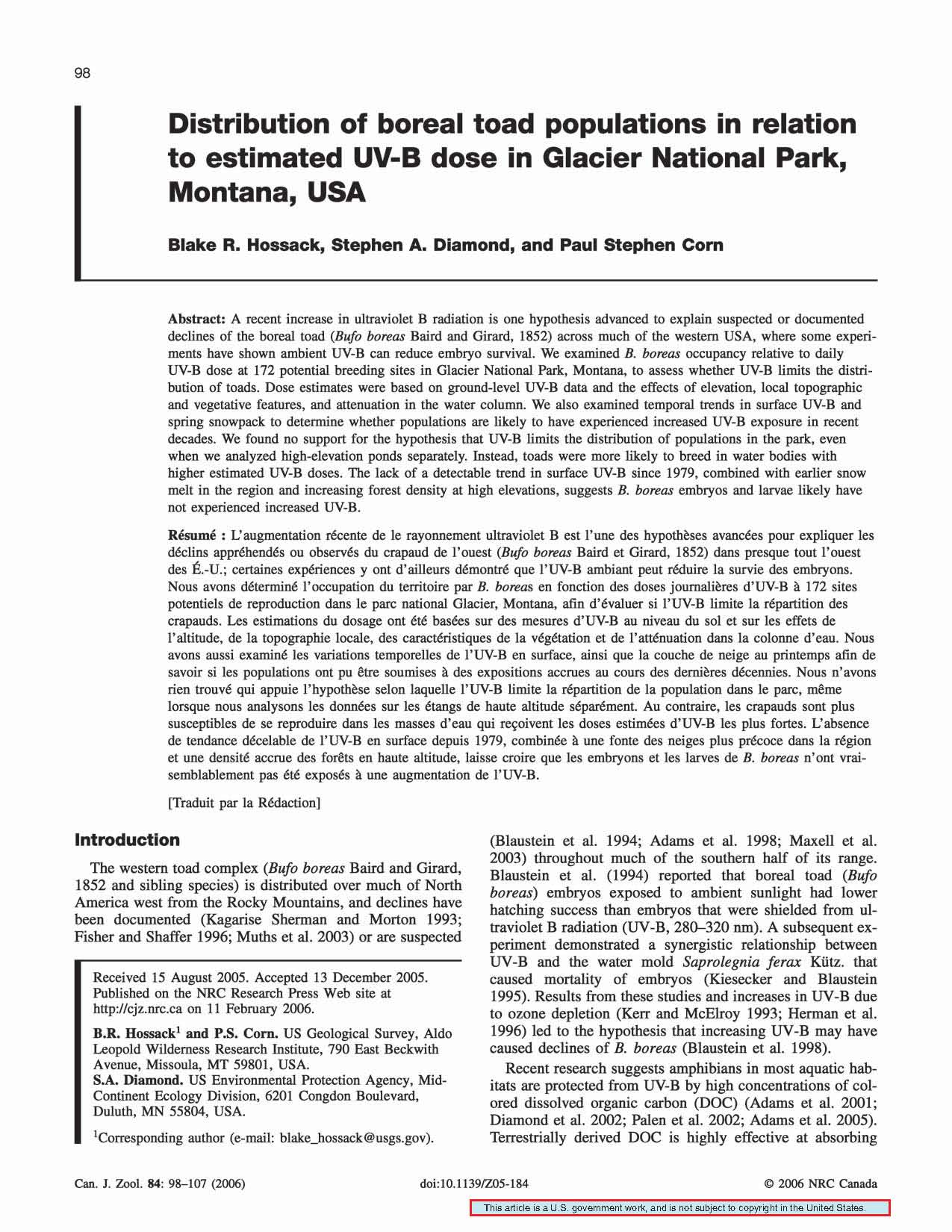Distribution of the boreal toad populations in relation to estimated UV-B dose in Glacier National Park, Montana, USA
Abstract/Summary
A recent increase in ultraviolet B radiation is one hypothesis advanced to explain suspected or documented declines of the boreal toad (Bufo boreas Baird and Girard, 1852) across much of the western USA, where some experiments have shown ambient UV-B can reduce embryo survival. We examined B. boreas occupancy relative to daily UV-B dose at 172 potential breeding sites in Glacier National Park, Montana, to assess whether UV-B limits the distribution of toads. Dose estimates were based on ground-level UV-B data and the effects of elevation, local topographic and vegetative features, and attenuation in the water column. We also examined temporal trends in surface UV-B and spring snowpack to determine whether populations are likely to have experienced increased UV-B exposure in recent decades. We found no support for the hypothesis that UV-B limits the distribution of populations in the park, even when we analyzed high-elevation ponds separately. Instead, toads were more likely to breed in water bodies with higher estimated UV-B doses. The lack of a detectable trend in surface UV-B since 1979, combined with earlier snow melt in the region and increasing forest density at high elevations, suggests B. boreas embryos and larvae likely have not experienced increased UV-B.
Publication details
| Published Date: | 2006 |
| Outlet/Publisher: | Canadian Journal of Zoology 84: 98–107 |
| Media Format: |
ARMI Organizational Units:
Rocky Mountains, Northern - BiologyTopics:
DroughtSpecies and their Ecology
Stressors
Place Names:
MontanaKeywords:
amphibiansARMI
distribution
occupancy
population
stressors
UV

